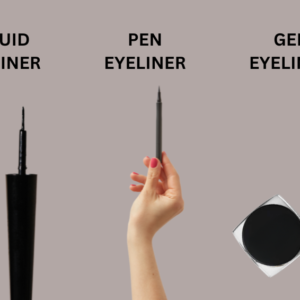The most popular choices of metals for jewelry are gold and silver. Both metals have been loved for thousands of years because of their beauty, rarity, and significance. When we compare gold vs silver they have different features, benefits and challenges. Choosing between gold and silver jewelry depends on various factors such as personal style, skin sensitivity, budget, and durability.

This guide will take you through a decision on what to find to match the right metal for that next jewelry purchase.
Gold vs Silver: Tips to Pick the Right Metal for Your Jewelry?
1. Understanding the Basics: Gold vs Silver
Gold: It is one of the fundamental yellowish metals that was in use over 5,000 years ago to make money and jewelry. Pure gold or 24k is a soft metal; hence, it gets alloyed when going to be used as part of everyday jewelry products; it’s alloyed either with copper or silver. Jewelry from this material varies between shades- yellow, white, or rose.
Silver: It is a bright white, shiny metal which has been used for hundreds of years in jewelry. Sterling silver is the most popular type of silver used for jewelry, made up of 92.5% pure silver and 7.5% other metals, generally copper. It is both tough and inexpensive and wears brilliant polish.
2. Aesthetic Appeal: Which Metal Looks Best?
The choice of metal is also based on personal taste and style. Both gold and silver have different kinds of aesthetic qualities.
Gold: This is warm and rich in appearance, so gold is always associated with luxury and timelessness. It suits all skin tones and can give a look a touch of elegance. Yellow gold has a traditional and regal feel because of its classic hue. White gold is selected due to its modern, sleek look, because it has a cooler, silvery tone. Rose gold, having a pinkish color, has been in vogue lately for its romantic and vintage appeal.
Silver: It is more understated and low-key compared to gold. Its modern look is sleek but may come off as casual yet elegant. Its bright sheen suits minimalist designs and simple outfits. This metal can be paired with a great deal of gemstones and mixed and matched with almost every style of dress. Silver is also an excellent choice for those who appreciate intricate, detailed designs as it can be crafted to make very fine jewelry.
Also Read – Permanent Jewelry vs Traditional Jewelry: What Makes It Unique?
3. Durability and Maintenance: How Long Will It Last?
Even though both gold and silver are powerful metals, there is a difference between them when it comes to maintenance and longevity.
Gold: It is also less likely to tarnish and rust, so that explains its ability to last for long periods among the population who would want them to be used for long durations. However, pure gold is weak and can be marked by scratches and dents with very slight pressures. Mixing this with copper or nickel does create a more resistant jewelry item. 10k and 14k gold have higher resistance strength than the 18k and 24k but hold less in actual percentage of pure gold.
Silver: Sterling silver is used often in jewelry, but it is often the most common type which can easily tarnish. Tarnish can arise from air, moisture, or chemicals, but generally, just cleaning it will repair, but it does tarnish. Silver is a softer metal and wears and scratches more easily than gold but is still strong if kept clean. To maintain silver jewelry, it must be kept in a dry, cool place and cleaned regularly to avoid the accumulation of tarnish.
4. Cost: Which Metal Fits Your Budget?
One of the major differences between gold and silver is in terms of price.
Gold: It is usually much more costly than silver because the metal is scarce and a lot of time is taken in mining and refining. The value of gold varies with the karat or purity and market value, which can change over the long term. The higher-karat gold, like 18k, 22k, and 24k, is expensive because it contains a greater percentage of pure gold. Although gold jewelry is quite a long-term investment, perhaps the bigger pieces required by some may not afford such an investment.
Silver: It is significantly less expensive than gold, so silver is indeed a great option for anyone with a budget in mind. You can get bigger and more complex pieces for that much money because sterling silver jewelry is cheaper to manufacture as well as purchase compared with gold jewelry. Silver will lack much of the long-term value that gold does boast of. Therefore, it’s an exceptionally good choice if you wish to have quality pieces along with style without necessarily sacrificing a fortune.
5. Skin Sensitivity: Which Metal Is Better for Your Skin?
One other thing that sensitive-skinned individuals have to think about when choosing their jewelry is the potential allergy caused by metal. Gold and silver are hypoallergenic metals, but they have a difference that people must be aware of.
Gold: Pure gold 24k is hypoallergenic and has no alloys that may provoke some allergic reactions. On the other hand, most jewelry gold pieces are made from 10k, 14k, or 18k gold, containing another metal like copper, nickel, or palladium. Such alloys can irritate some, especially those allergic to nickel, and should be considered upon purchasing gold jewelry, when having sensitive skin.
Silver: Sterling silver poses very little risk for many because it is comprised largely of pure silver (92.5%) with an equal mixture of other metals typically with traces of copper. Not usually, for certain patients, small amounts of copper trigger certain allergies related to red skin or irritation. It seems relatively comfortable against tender skin, but with issues related to a tolerance on copper, consider its substitutes being silver-plated, as for nickel-free.
6. Versatility: Which Metal Goes with More Outfits?
Both gold and silver are versatile in their own ways, but they give different looks and compliments to outfits.
Gold: Gold has a timelessness and richness that blends well with informal and formal wear. Yellow gold suits warmer colors like earth tones, red, and oranges, while white gold and rose gold have cooler undertones, which would go well with cooler colors like blues, purples, and greens. It also lends a sophisticated touch to evening wear or special occasions.
Silver: Silver tends to have a more balanced tone and can go along with the widest variety of colors and is best used for everyday and formal. It especially suits modernistic styles, boho styles, or minimalistic style outfits. The silver jewelry can be paired with several gemstones and outfits very easily.
7. Environmental Impact: Which Metal Is More Sustainable?
Due to growing awareness of environmental issues, sustainability is one of the most critical considerations between choosing gold and silver.
Gold: Gold mining is extremely destructive: destroying habitats, polluting waters, and using toxic chemicals. Of course, many jewelers have now turned to providing their customers with eco-friendly or recycled gold, minimizing harm in the process. Recycling is far more sustainable than the original, as it will consume much less energy and has a much smaller environmental footprint.
Silver: Silver mining is believed to be less harmful than gold mining, though it has associated environmental issues. Silver is one of the most recycled metal types. The use of recycled silver reduces the consequences of mining. Most jewelers produce sterling silver from recycled materials-thus it is a rather more sustainable option than brand-new mined silver.
8. Making the Right Choice for You
It is the choice between gold and silver that depends on your preference, lifestyle, and budget. The following factors should be considered to guide a choice:
- Budget: If you’re looking for something affordable, silver is the best choice, as it’s much more budget-friendly than gold.
- Style Preferences: If you go for old-fashioned, timeless jewelry, then gold would be your metal. Silver, however, may appeal more to people who prefer modern minimalist and vintage pieces.
- Durability: If you want something that will withstand the years of the past without tarnishing, then the more durable will be gold. Silver, when treated well, can also be equally durable.
- Both are hypoallergenic metals but take the alloys into consideration based on sensitivities that may prevail for some people.
Also Read – Search Why gold “Gold never gets Old”- Why gold is more popular than other precious metals?
9. Symbolism and Cultural Significance: What Do These Metals Represent?
Both gold and silver carry deep cultural meanings and symbolism across different societies and historical periods. At times, these associations affect your decision when choosing jewelry.
Gold: This was the most prized thing over thousands of years. Most people view gold as a symbol of wealth, power, and status. From ancient times, the very first civilizations used gold in making royal crowns, coins, and other artifacts for religious purposes. To many cultures, gold often symbolizes the sun, eternal life, and wealth as a source of light. In more modern times, gold jewelry has always been the choice for anniversaries, weddings, achievements, and other similar milestone events because it never fades away.
Silver: Though silver does not have the same connotations as gold, it is a highly valued metal with plenty of symbolic meaning. Silver is one of the moon’s preferred metals and thus is tied to intuition, feminine energy, and emotional clarity. Similarly, in different cultures, silver metal has been valued as a symbol of purity and clarity. Many people opt for silver jewelry to represent modesty, balance, and practicality, as it often serves as a subtle yet elegant choice for both everyday wear and special occasions.
10. Customization and Design Options: How Do the Metals Compare?
Custom jewelry in either gold or silver has different preferences. All metals have various properties regarding how they should be handled, shaped, designed, and personalized to make perfect jewelry. Be it a more delicate and detailed piece of jewelry or making a significant statement, whether it comes to gold or silver depends on the style of design.
Gold is suitable when you want some intricate details.
Gold is very ductile. It is the preferred material for intricate custom jewelry. Pure gold, which is 24k, is so soft that it can be molded and engraved with relative ease to produce intricate designs or personalized details. The following are the perfect uses for gold:
- Engravings: Personalizing pieces with names, dates, or messages.
- Custom Shapes: One-of-a-kind rings, necklaces, and other jewelry.
- Fine Detailing: Intricate designs such as filigree require delicate metalwork.
Gold is also available in different colors, including yellow, white, and rose, which provides more varieties for personalization.
Silver is affordable and versatile.
Silver, especially sterling silver, is another popular choice for custom designs. It’s less malleable than gold, but it still takes intricate work and detailed designs. Silver is best used for:
- Affordable Customization: It provides a cost-effective solution for precise work.
- Engraving and Stamping: Decorating articles with engraved or stamped motifs.
- Oxidized Designs: Creating unique, darkened areas for a vintage look.
Sterling silver is strong enough to hold detailed designs but still needs proper care to prevent tarnishing.
Conclusion
Both gold and silver are excellent jewelry selections, each with its unique properties and advantages. Gold promises luxury, timeless beauty, and durability, whereas silver is affordable, sleek, and versatile. It depends on your personal style and budget and the needs you have in life. But both the metals are elegant, and whichever one you choose, it will dress your jewelry collection with that beauty and value for life.






